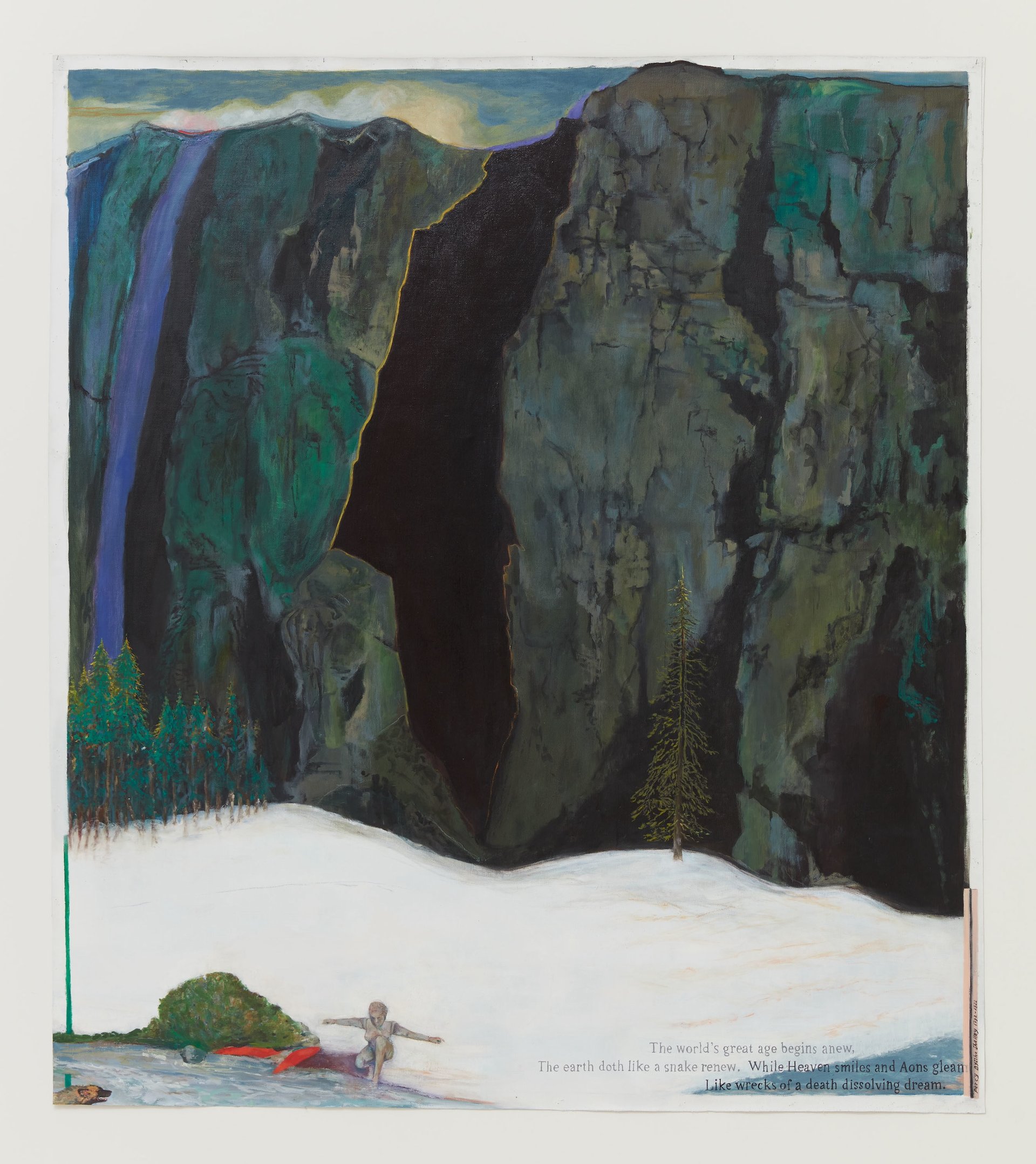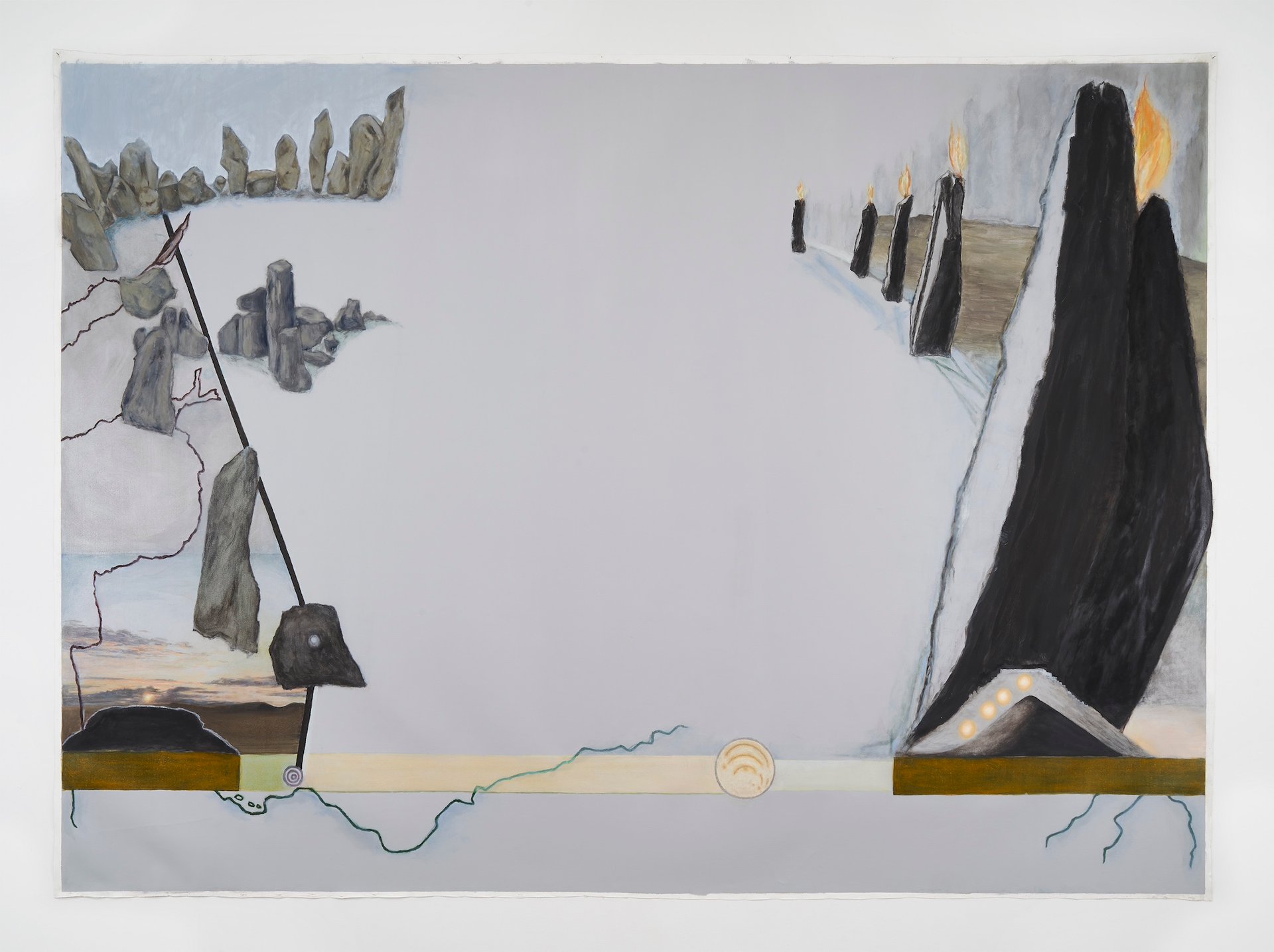The American painter Jo Baer, best known for her monumental contributions to the fields of Minimalist abstraction and later figuration, has died, aged 95.
Baer was born Josephine Gail Kleinberg in Seattle, Washington, in 1929. At the encouragement of her mother, who hoped she would become a medical illustrator, Baer studied biology at the University of Washington, where she also enrolled in introductory painting and drawing courses. She later completed a graduate degree in psychology from the New School for Social Research in New York, while working for an interior design studio as a draftsperson.
In 1953, Baer moved to Los Angeles and married television writer Richard Baer, with whom she had a son in 1955, the art consultant Josh Baer of The Baer Faxt newsletter. The couple divorced and Baer married the painter John Wesley in 1960, with whom she divorced in 1970. The couple had relocated to New York in 1960, during a time when Baer had shifted her focus to painting and drawing full time.
Jo Baer, The Risen (Big-Belly), 1960-1961/2019 © Jo Baer, courtesyPace Gallery
In New York, Baer emerged as a central figure in the Minimalist movement. Throughout the 1960s and 70s, she explored non-objectivity in her black and white hard-edge paintings that focused on the nuances of form, colour and spatial relationships. Her work was characterised by precise geometric forms and a restrained palette, emphasising the painting as an object in its own right.
During this time, Baer exhibited her work in New York with major galleries like Fischbach and Dwan, and was frequently featured alongside peers like Donald Judd, Dan Flavin and Sol LeWitt. Her work was included in Documenta in 1968, and in the groundbreaking 1966 exhibition Systemic Painting at the Solomon R. Guggenheim Museum, which explored the rising field of geometric abstraction. In 1975, Baer had a mid-career retrospective at the Whitney Museum of American Art featuring her Minimalist paintings.
Seeking new artistic horizons, Baer left New York for Europe the same year, expressing that she wished to work in an environment that was less hostile toward women and less focused on commerce. Her work also began to move away from pure abstraction, incorporating figural elements, text and symbols that challenged previous boundaries of Minimalist aesthetics. Baer spent some years in Ireland and London before settling in Amsterdam in 1984, where she continued to work until the end of her life.

Jo Baer, Snow-Laden Primeval (Meditations, on Log Phase and Declinerampant with Flatulent Cows and Carbon Cars), 2020 © Jo Baer, courtesy Pace Gallery
Baer coined the term “radical figuration” in a letter to Art in America in 1983, where she stated that she was “no longer an abstract artist”. She described a blurring between abstraction and figuration, creating works that incorporated fragmented or edited images. On her decision to depart from Minimalism, Baer said she “wanted more subject matter and more meaning” in her work.
Baer wrote prolifically about her life and approach to art-making, some of which was published in Broadsides and Belles Lettres: Selected Writings and Interviews 1965-2010. In a 2020 studio visit interview with Artnet News, when asked what trait she admired and disliked in a work of art, Baer responded: “I admire originality and ‘the genuine’. I dislike clichéd, worn-out work (abstract and otherwise).”
Baer’s work is held in major museum collections, including the National Gallery of Art in Washington, DC, the Museum of Modern Art (MoMA) in New York, the Stedelijk Museum in Amsterdam, the Tate in London and the National Gallery of Australia in Canberra.

Jo Baer, Dusk (Bands and End-Points), 2012 © Jo Baer, courtesy Pace Gallery
In addition, Baer participated in various important group exhibitions in recent years, including the 2014 São Paulo Biennial, the 2017 Whitney Biennial and the exhibition Making Space: Women Artists and Postwar Abstraction at MoMA in 2017, which sought to spotlight women artists whose work had been eclipsed by their male contemporaries. The last retrospective of Baer’s work was held by the Stedelijk Museum in 1999. Baer had her most recent exhibition in 2023 at the Irish Museum of Modern Art in Dublin, titled Coming Home Late: Jo Baer In the Land of the Giants.
Baer’s death on 21 January was announced today (22 January) by Pace Gallery, which has represented the artist since 2019. Her first exhibition with the gallery came in 2020, a two-part show that featured minimalist paintings she created in the 1960s that were destroyed and remade from archival images, alongside a selection of works dating from between 1975 and 2020 that traced the evolution of her practice.
In a statement, Pace Gallery president Samanthe Rubell says Baer was “a visionary painter who made a name for herself in the male-dominated New York art world of the 1960s”.
She adds: “Working closely with Jo, I was always struck by her strength and fearlessness—and her ability to reinvent herself and her approach to painting over the course of her career. Jo’s power will be deeply felt in Pace’s programme and community for many years to come.”




















